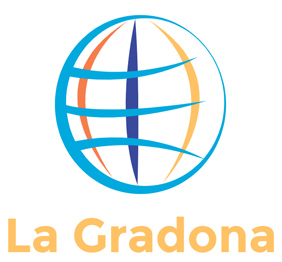La alcalinidad afecta la absorción de CO2 y contribuye a la capacidad amortiguadora a largo plazo del océano. Crédito: Hereon/Nele Lehmann
Un estudio reciente de Hereon examina el impacto de la roca disuelta en el secuestro de CO2 en el océano.
Así como ajustar los ingredientes de un plato puede dar como resultado un sabor completamente diferente, las variaciones en las sustancias presentes en el agua de mar pueden alterar significativamente la unión de CO2. El concepto de alcalinidad, que se refiere a la capacidad del agua para neutralizar[{» attribute=»»>acid, is formed by the breakdown of rocks and their subsequent entry into the ocean. An increase in erosion on land leads to more weathering of silicates and carbonates. The study conducted by the researchers used a model to identify the factors that contribute to increased alkalinity, such as the degree of erosion, the proportion of carbonates in the area, temperatures, catchment size, and soil thickness.
Method and influencing factors
“The model we used is a statistical, not a mechanistic model. We applied it to identify the factors influencing alkalinity based on our compiled data set and to describe their interdependencies,” says Nele Lehmann of the Hereon Institute for Carbon Cycles, lead author of the study, which was an international collaboration with the Alfred Wegener Institute Helmholtz-Zentrum für Polar- und Meeresforschung (AWI) and funding from the Deutscher Akademischer Austauschdienst (DAAD).
If warming continues slowly, alkalinity would drop by up to 68 percent by 2100, depending on the watersheds. That means the ocean’s ability to sequester CO2 would decrease significantly. Rapidly progressing warming, on the other hand, would lead to higher temperatures and thus more precipitation in temperate climate zones. This would increase alkalinity by up to 33 percent. “But that doesn’t mean that more emissions are good for the climate. The impact of alkalinity is small compared to the amounts of man-made CO2 emitted around the world. The process of weathering unfolds its effects over much longer periods of time,” Lehmann said.
Climate change is greatly accelerating the interplay of carbon cycling and weathering that is fundamental to the development of life. The team first looked for existing data. The goal was to find as many alkalinity measurements as possible in the immediate vicinity of erosion measurement sites. To do this, the researchers searched databases and publications and took samples themselves. They conducted the investigation of the alkalinity factors using their new model. The biggest limitation: the erosion rate measurements the researchers used have often only been taken over 20 years, and are complex and expensive. This made it difficult to produce the data set. Especially in the higher latitudes, there are hardly any measurements, so the study is limited to the mid-latitudes.
New questions in the Arctic
Next, Lehmann would like to investigate alkalinity and the erosion rate in the Arctic. There, the data situation is patchy. And climate change is clearly noticeable, so potentially the biggest change in alkalinity flux could also occur. Of particular importance: whether erosion itself is changing as a result of climate change.
Reference: “Alkalinity responses to climate warming destabilise the Earth’s thermostat” by Nele Lehmann, Tobias Stacke, Sebastian Lehmann, Hugues Lantuit, John Gosse, Chantal Mears, Jens Hartmann and Helmuth Thomas, 24 March 2023, Nature Communications.
DOI: 10.1038/s41467-023-37165-w
También te puede interesar
-
Astrónomos resuelven el misterio de la fusión del sistema binario con una estrella magnética | Noticias científicas
-
Cometa C/2023 A3 Tsuchinshan-ATLAS: una nueva imagen – 27 de abril de 2024.
-
El satélite astronómico chino Einstein Probe captura las primeras imágenes en órbita – Xinhua
-
Las estrellas de neutrones podrían capturar agujeros negros primordiales
-
Detectabilidad de biofirmas de superficie para exoplanetas rocosos fotografiados directamente

